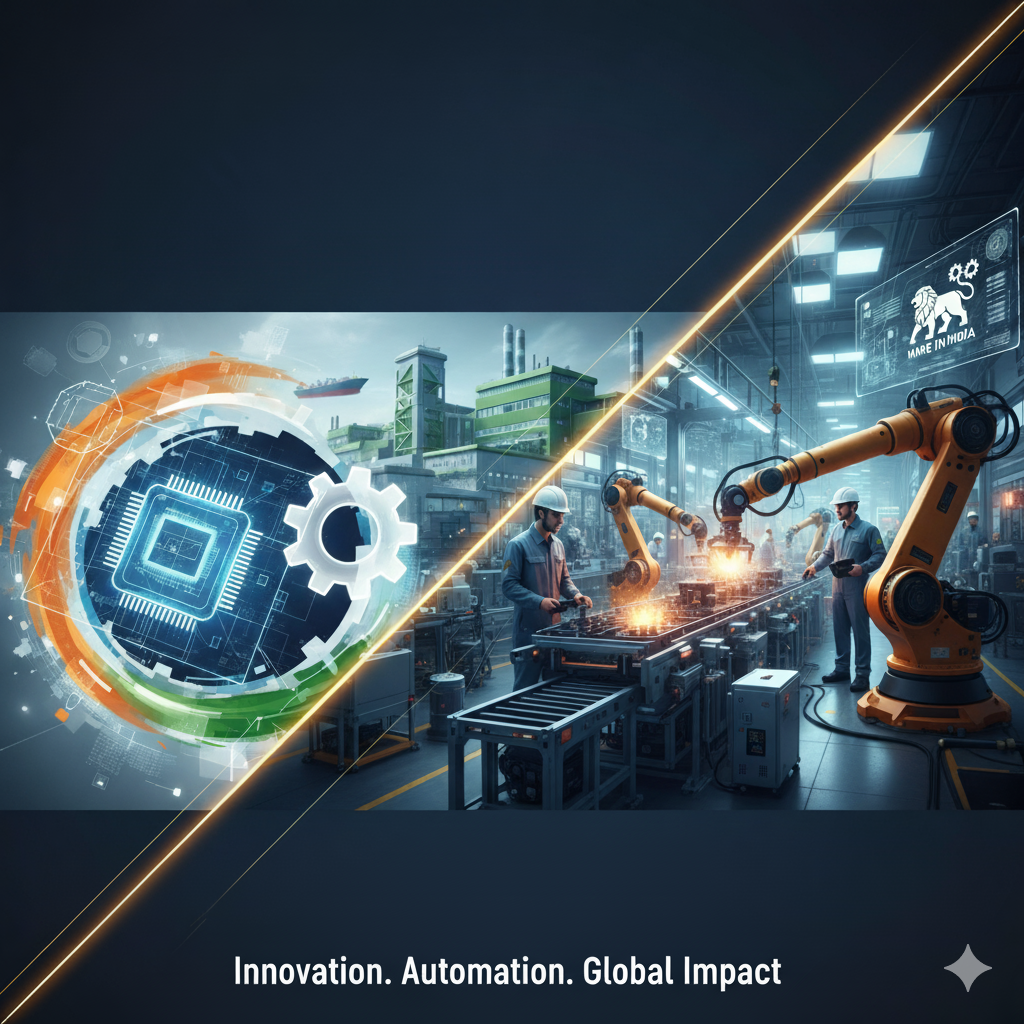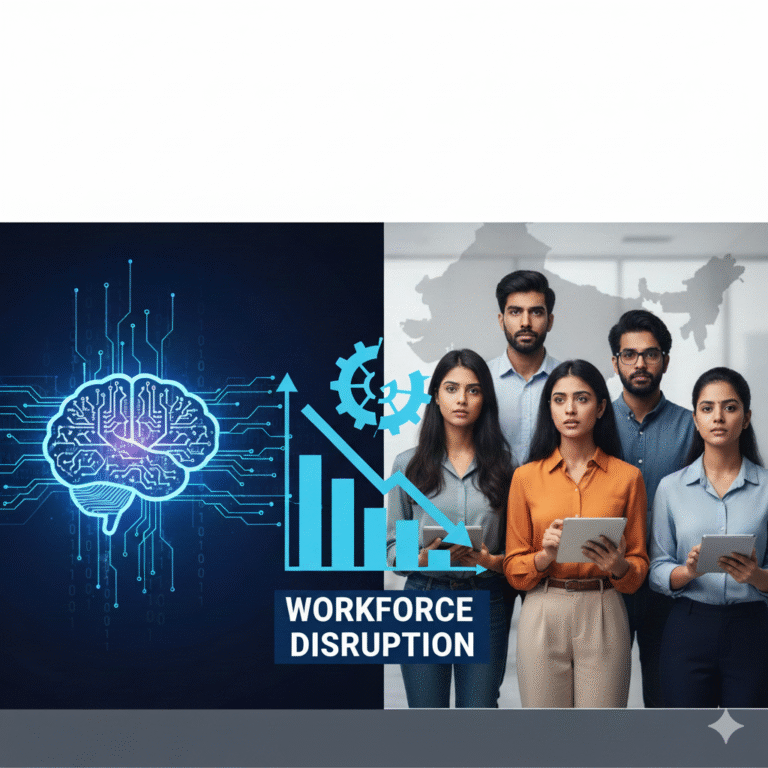Key Highlights
- Singapore’s A*STAR has invested over S$55 million in joint manufacturing labs, creating 6 new product lines and doubling SME revenues
- The SSAM Catalyst innovation sandbox provides low-barrier environment for companies to test Industry 4.0 technologies across aerospace, semiconductors, and biomedical sectors
- India’s Industry 4.0 market is projected to grow from $5.5 billion in 2024 to $27 billion by 2033 at 19.2% CAGR
- Only 4.7% of India’s workforce has formal skill training versus 96% in South Korea, highlighting critical gaps in advanced manufacturing readiness
- Singapore’s state-led collaborative model contrasts with India’s fragmented R&D ecosystem, offering clear lessons for transformation
Singapore has emerged as a global powerhouse in advanced manufacturing through its Agency for Science, Technology and Research (A*STAR). This strategic approach offers invaluable lessons for India’s manufacturing ambitions.
Singapore’s A*STAR Revolution
Singapore’s commitment to advanced manufacturing excellence centers on A*STAR’s comprehensive ecosystem approach. The agency has positioned itself as the critical bridge between research innovation and industrial application.
The Global Manufacturing Imperative
Advanced manufacturing has become essential for economic competitiveness in the modern era. Countries leveraging Industry 4.0 technologies including artificial intelligence, automation, and digitalization are capturing higher-value segments of global supply chains.
Singapore recognized this imperative early, investing heavily in public-sector R&D agencies to drive technological advancement and economic growth. edb.gov
A*STAR’s Winning Formula: Key Strategic Components
Public-Private Partnership Excellence
A*STAR’s strategy revolves around strategic collaboration with SMEs, MNCs, and global partners. This approach has delivered remarkable results:
The Abrasive Engineering collaboration exemplifies this success. Through their joint lab, the company:
- Increased revenue by over 50% through automation upgrades
- Created six new product lines including the world’s first microwave media dosing unit
- Generated $3.5 million revenue increase during the joint lab period
- Expanded globally to China, Japan, and Europe markets
Innovation Sandboxes: The SSAM Catalyst Model
The Smart and Sustainable Advanced Manufacturing (SSAM) Catalyst represents A*STAR’s most advanced innovation platform.
This innovation sandbox provides companies with:
- Integrated automation, electrification, industrial software, and AI solutions
- Low-barrier environment for co-innovation and technology piloting
- Real-world testing capabilities across aerospace, semiconductors, and biomedical sectors
Siemens became the first technology partner in 2025, demonstrating global confidence in this model.
Industry 4.0 Leadership
A*STAR’s focus on AI, automation, digitalization, and precision engineering has positioned Singapore at the forefront of smart manufacturing.
Key technological capabilities include:
- Advanced simulation and validation technologies
- Industrial AI-driven tools for data-informed decision-making
- Fully autonomous manufacturing environments for “lights-out” factories
Strategic Sectoral Focus
A*STAR concentrates on high-value sectors including:
- Aerospace – with companies like Rolls-Royce and SAESL
- Semiconductors – leveraging Singapore’s global supply chain position
- Life Sciences – supporting biomedical manufacturing
- Sustainable Manufacturing – addressing environmental challenges
Transformative Outcomes: Measuring A*STAR’s Impact
High-Value Job Creation and IP Development
A*STAR’s initiatives have generated:
- Creation of high-value R&D jobs across partner companies
- Multiple new intellectual property developments through joint labs
- Enhanced SME competitiveness enabling global market expansion
SME Revenue Growth Success Stories
Grand Venture Technology and Applied Total Control Treatment represent new partnerships expected to create new intellectual property, product lines, and business opportunities.
The Abrasive Engineering case study demonstrates tangible transformation:
- Revenue growth from S$7 million in 2017 to S$8.5 million in 2018
- Projected revenue of S$25 million by 2030 through continued partnership
- Shift from service-focused to technology-driven product owner
Global Supply Chain Integration
Singapore has strengthened its global supply chain role through:
- Strong participation in high-value exports
- Digital transformation acceleration
- Enhanced manufacturing ecosystem resilience
India’s Manufacturing Reality: Current Status and Challenges
India’s Manufacturing Growth Trajectory
India’s manufacturing sector shows promising momentum:
- Manufacturing contributes 15-16% to GDP with growth targets of 25% by 2025
- Industry 4.0 market valued at $5.5 billion in 2024, projected to reach $27 billion by 2033
- $165+ billion investment committed to advanced manufacturing initiatives
Critical Challenges Limiting Progress
Infrastructure Deficiencies: India’s logistics costs at 7.97% of GDP show improvement but gaps in multimodal connectivity persist. Frequent power outages, inadequate water supply, and poor transport networks disrupt manufacturing efficiency.
Regulatory Complexity: Manufacturing MSMEs face over 1,450 regulatory obligations annually with compliance costs ranging from ₹13-17 lakh per year.
Skills Gap Crisis: Only 4.7% of India’s workforce has formal skill training versus 96% in South Korea. This represents a fundamental constraint on advanced manufacturing adoption.
Technology Adoption Barriers: Despite growth potential, adoption remains uneven among MSMEs with 57% of firms perceiving job displacement risk from automation.
Singapore vs India: Comparative Analysis Framework
| Aspect | Singapore (A*STAR) | India (Current Status/Challenges) |
|---|---|---|
| Innovation Model | State-led, collaborative, open innovation platforms | Emerging, fragmented R&D ecosystem; needs stronger integration |
| Sectoral Focus | High-value sectors (semiconductors, aerospace, biotech) | Strong IT/design base, needs deeper focus in high-tech production |
| Talent & Skills | Significant investment in upskilling, retention | Large workforce, but skill gaps in advanced manufacturing |
| Industry-Academia Linkage | Robust, institutionalized at national scale | Often weak; potential to emulate Singapore’s approach |
| Global Supply Chains | Strong participation, high-value exports | Growing, needs higher-end production and integration |
| Policy Framework | Streamlined, business-friendly regulations | Complex regulatory environment, multiple clearances |
Strategic Roadmap: India’s Path to Manufacturing Excellence
Immediate Priority Actions
Establish A*STAR-style Innovation Hubs: Create dedicated advanced manufacturing innovation centers modeled on the SSAM Catalyst approach.
Sector-Specific Joint Labs: Promote industry-academia joint laboratories focusing on semiconductors, aerospace, and biomedical manufacturing.
Regulatory Simplification: Fast-track land acquisition, rationalize taxes, and improve contract enforcement following parliamentary recommendations.
Medium-Term Strategic Initiatives
Skills Development Revolution: Implement specialized financing schemes and credit guarantee funds for MSMEs while expanding formal skill training beyond the current 4.7% workforce coverage.
Infrastructure Acceleration: Complete pending industrial corridor projects and expand dedicated freight corridors with GIS-tagged real-time monitoring.
R&D Investment Scaling: Tie future PLI disbursements to in-house R&D spending thresholds in critical sectors like electronics and semiconductors.
Long-Term Transformation Goals
Global Supply Chain Integration: Lower logistics costs and negotiate trade agreements while implementing “Districts as Export Hubs” initiatives.
Sustainability Leadership: Launch Green Manufacturing Missions aligned with SDGs and circular economy models focusing on waste reduction and material recycling.
Technology Sovereignty: Develop indigenous Industry 4.0 standards and protocols while reducing dependence on foreign technologies.
Policy Recommendations for India’s Manufacturing Renaissance
Institutional Framework Development
India should establish A*STAR-equivalent national agencies with:
- Dedicated budgets for advanced manufacturing R&D
- Streamlined decision-making processes
- Industry partnership mandates with measurable outcomes
Financial Ecosystem Enhancement
Expand MSME credit access through:
- Specialized TReDS platform integration for prompt payment
- Tax incentives for corporations making timely MSME payments
- Innovation-linked financial products supporting Industry 4.0 adoption
Human Capital Transformation
Workforce development priorities:
- Massive expansion of formal skill training programs
- Industry 4.0 certification frameworks aligned with global standards
- Public-private reskilling partnerships addressing automation concerns
The Singapore Model: Adaptable Lessons for India
Singapore’s A*STAR success demonstrates that strategic public sector leadership combined with systematic private sector engagement can accelerate manufacturing transformation.
Key adaptable elements include:
- Innovation sandbox approaches for low-risk technology testing
- Joint laboratory models for sustained industry-academia collaboration
- Sector-specific focus on high-value manufacturing segments
- Global partnership frameworks attracting international technology leaders
India’s vast domestic market, growing manufacturing base, and expanding skilled workforce provide unique advantages that, combined with Singapore’s proven strategies, could drive unprecedented manufacturing growth.
The path forward requires political commitment, institutional innovation, and sustained investment in both physical and human infrastructure. Singapore’s A*STAR blueprint offers not just inspiration but a practical roadmap for India’s manufacturing renaissance.









+ There are no comments
Add yours